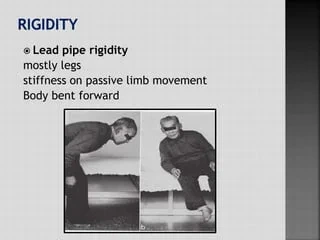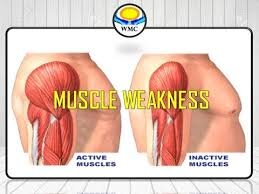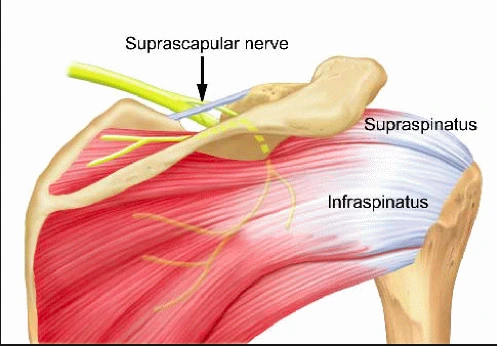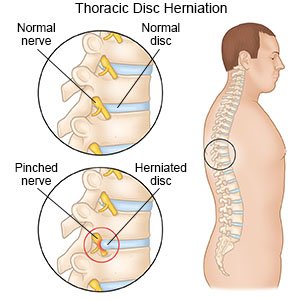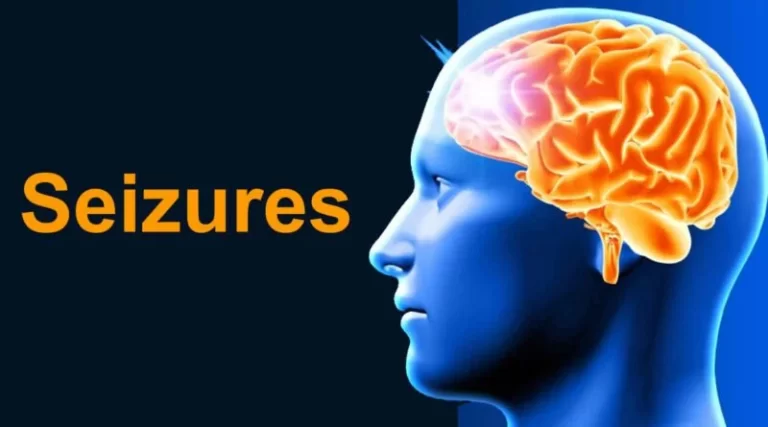Lead Pipe Rigidity
Table of Contents
What is a Lead Pipe Rigidity?
- Lead pipe rigidity is explained as a persistent resistance to movement throughout the entire Range Of Movement (ROM).
- Refers to hypertonic state throughout the Range Of Motion (ROM) i.e. simultaneous co-contraction of agonists and antagonists and this is reflected in a rapid resistance to an inversion of the direction of movement about a joint.
- The term “lead pipe rigidity” is derived from the rigid and constant resistance felt when trying to passively move a limb, similar to trying to bend a rigid lead pipe. This rigidity is distinct from “cogwheel rigidity,” which is another type of muscle rigidity observed in Parkinson’s disease, where there is a rhythmic interruption of the resistance during passive movement, giving a sensation of intermittent “cogwheel-like” movement.
Definition of Rigidity
- Muscle rigidity refers to a state of increased stiffness or resistance to movement in muscle tissue. It is a physiological condition that can affect both skeletal muscles, responsible for voluntary movements, and smooth muscles, found in organs and blood vessels.
- It results from the excessive upper motor neuron facilitation (supraspinal drive) operating on alpha motor neurons, which normally have normal spinal reflex mechanisms. In Parkinson’s rigidity, tendon jerks are commonly normal.
- Muscle rigidity can have various underlying causes, including neurological disorders, muscle injuries, certain medications, metabolic imbalances, and even psychological factors. In some cases, muscle rigidity is a protective mechanism that occurs to prevent excessive movement or protect injured tissues.
- In neurological contexts, muscle rigidity is often associated with conditions such as Parkinson’s disease, where it is one of the hallmark symptoms. In this context, it is referred to as “parkinsonian rigidity” and is characterized by increased resistance to passive movement and a feeling of stiffness in the muscles.
- Rigidity in muscles can lead to discomfort, reduced range of motion, and impaired physical function. It may also contribute to issues with posture and gait, affecting the individual’s overall quality of life.
- The management of muscle rigidity involves identifying and treating the underlying cause. Physical therapy, muscle relaxants, and other medical interventions may be prescribed to alleviate symptoms and improve muscle flexibility.
- Understanding the mechanisms and factors contributing to muscle rigidity is essential for healthcare professionals to provide effective treatments and support to those experiencing this condition.
Type of Rigidity
There are different types of rigidity observed in various medical conditions. Some of the common types include:
- Lead Pipe Rigidity: Lead pipe rigidity is a constant and uniform resistance felt during passive movement of a limb. It is commonly associated with Parkinson’s disease and results from the degeneration of dopamine-producing neurons in the brain.
- Cogwheel Rigidity: Cogwheel rigidity is characterized by intermittent interruptions in the resistance felt during passive movement. It gives a sensation of a series of small jerks or catches, similar to the movement of cogs in a machine. Cogwheel rigidity is also a hallmark feature of Parkinson’s disease.
What is the Pathophysiology of Lead Pipe Rigidity?
The neurological characteristic of impulsive rigidity of muscles that persists the same even when existence is passively modulated is known as “lead-pipe” rigidity. It is the outcome of injury to the basal ganglia. This is associated with many more neurological diseases, particularly Parkinson’s disease.
How will the doctor test for Lead Pipe Rigidity?
At your appointment, your doctor will ask you to retain your limbs as rested and loose as possible. Then, they will lightly flex and extend your joint, like your elbow, wrist, or shoulder. If you are experiencing rigidity, your doctor will feel an improved resistance to movement in both directions – extension, and flexion. A special perspective of cogwheel rigidity is that the jerky motion happens at both slow and fast speeds.
Differences between Lead Pipe Rigidity Vs Cogwheel Rigidity
| Lead Pipe Rigidity | Cogwheel Rigidity |
| Resistance Pattern: Constant and Smooth resistance to passive movement | Jerky and rhythmic resistance |
| Fluctuations: Does Not Show any Rhythmic Fluctuations in Resistance | Tremor-Like Movements |
| Underlying Mechanism: Increased Muscle Tone | Combination of Increased Muscle Tone and Tremor |
Conclusion
Lead pipe rigidity and cogwheel rigidity are two distinct types of muscle stiffness usually seen in movement disorders. For an accurate diagnosis and effective treatment planning, it is crucial for understanding their differences.
What is the Treatment of Lead Pipe Rigidity?
A variety of treatments exist to assist you manage rigidity. Here is certain you can try today.
Exercise
If your muscles are tight and harmful, you may not want to move. However, this loss of movement will occasion even more stiffness. It is a negative feedback loop. Create a daily routine, so you exercise even if you do not feel such as it.
Not the whole exercise has to be high-intensity. Whether it is cleaning out a closet, hiking, walking to the mailbox, practicing yoga, dancing, bicycling, and watering your plants, frequently moving throughout the day can help reduce rigidity.
Yoga
Not only can yoga assist with flexibility and mobility, yet it can also reduce depression and improve the feeling of well-being.
Warm Water Bath With Epsom Salt
A soothing, hot water bath can rest muscles and reduce rigidity.
Physical Therapy, Occupational Therapy, Speech Therapy
Regularly participating in these rehab therapies can assist decrease rigidity in specific areas of your body. Speech therapy can help cure facial masking.
Medication
You do not have to live with stiffness and pain. Talk to your medical officer about your rigidity or if nothing else is working, ask about drugs that can assist.
Mix It Up
Participate in a variety of activities to reduce stiffness. On various days, try yoga, dancing, tennis, swimming, bicycling, walking the dog, Rock Steady Boxing the list goes on.
Use A Health-Tracking App
Create a movement goal on a weekly basis. Get social with it if that is something that improves the likelihood you will stick with it. Receiving kudos and positive advice from friends can motivate you even more.
Buddy System
Find a friend to walk and exercise with consistently. Talking while walking gives you something to see forward to.
Exercise While Learning
We are living in a golden age of audio offerings. While walking around the surrounding area or in the woods, listen to an audiobook or podcast. Discover cooking, gardening, fishing, life tales, and unique hobbies. Exercising is not a chore if you are looking forward to a chapter from an audiobook. You can find vast libraries of audiobooks on Audible or the Overdrive app, which receives you access to free audiobooks from your library.
Physiotherapy Treatment
- For the majority of patients, treatment goes more smoothly if stiffness is reduced early on in the session. Therefore, movement therapy interventions look to have more lasting effects when the treatment is performed during the “on” part of a premedication cycle.
- Relaxation techniques look to be successful in reducing rigidity, including gentle, slow rocking, rotation of the limbs and trunk, and the usefulness of yoga. In patients with Parkinson’s disease, relaxation may be best achieved in the sitting or standing positions because rigidity may increase in the supine position. A distal-to-proximal transition may make relaxation easier to grasp because the proximal muscles are occasionally considerably more involved than the distal ones.
- Rhythmic Exercises are shown to reduce rigidity Eg. Clapping hands, & forming circles with hands or feet.
- Applying a hot compress or heating pad to the affected muscle to assist relax rigid muscles.
- Gently stretching your stiff muscle to assist relax it.
- Avoiding strenuous activity that might trigger the muscle to become rigid anew.
Relaxation & Stretching exercise:
- Exercises that involve gradual, rhythmic rotation and gentle rocking are also recommended.
- Rhythmic initiation technique in which movement progression from passive to active assisted and active movement.
- In supine: slow side-to-side head rotation. In hook lying: lower trunk rotation.
- In side lying: lower & upper trunk rotation.
Balance Training:
Develop increase-level eccentric strength dynamic neuromuscular efficiency & reactive joint stabilization.
Balance training programs aim to:
- Strengthen balance prevention in everyday activities leading to improved fall-related self-efficacy, reduced fear of falling, and increased walking speed
- Improve physical function
- Improve the quality of life
Gait Training
- The exercises target improving motion in your lower extremity joints, improving strength and balance, and stimulating the repetitive nature of your legs that occurs while walking.
Gait Training Exercises:
- Walking on a treadmill.
- Lifting your legs.
- Sitting down.
- Standing up.
- Stepping over objects.
Summary
Lead pipe rigidity is a distinct type of muscle rigidity observed in certain neurological conditions, most notably in Parkinson’s disease. It is considered one of the cardinal motor symptoms that help differentiate Parkinson’s disease from other movement disorders. This rigidity results from the degeneration of dopamine-producing neurons in the substantia nigra, a brain region involved in motor control.
Diagnosis of lead pipe rigidity is typically made based on clinical evaluation and observation of characteristic motor symptoms in patients with Parkinson’s disease or related neurological disorders. The presence of lead pipe rigidity, along with other symptoms like bradykinesia (slowness of movement) and resting tremors, contributes to the diagnosis of Parkinson’s disease.
Management of lead pipe rigidity in Parkinson’s disease typically involves medications that increase dopamine levels in the brain or mimic dopamine’s effects. These drugs can help alleviate rigidity and other motor symptoms, enhancing the patient’s mobility and overall quality of life.
FAQs
Lead pipe rigidity is explained as a persistent resistance to movement throughout the entire Range Of Movement (ROM).
The neurological characteristic of impulsive rigidity of muscles that persists the same even when existence is passively modulated is known as “lead-pipe” rigidity. It is the outcome of injury to the basal ganglia. This is associated with many more neurological diseases, particularly Parkinson’s disease.
Muscle Rigidity: Lead Pipe and Cogwheel Rigidity
Your muscles might feel tight and have problems moving. They might also stiffen involuntarily such as muscle spasms. This stiffness can also occasion joint and muscle pain.
This is the most usual symptom of Parkinson’s disease. The muscles become stiff and the body no long-time moves smoothly. When muscle movement becomes jerky movement, it is called cogwheel rigidity, and when stiffness remains, it is called lead-pipe rigidity. Immediate movements can no longer be performed.

